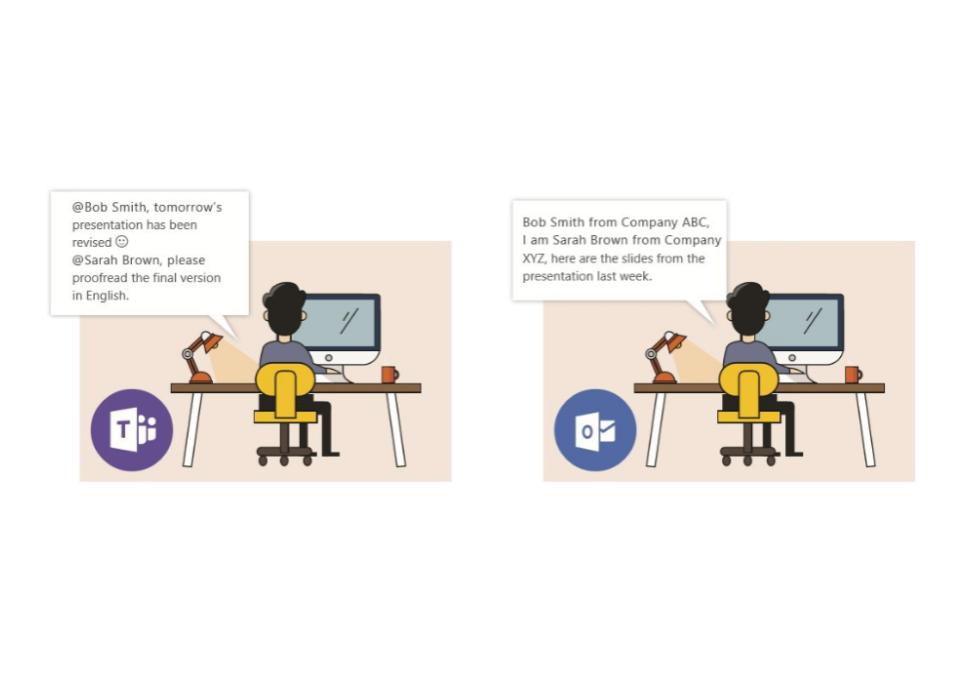It’s not unusual to make mistakes within departments, everybody makes mistakes. Most can be harmless, some are embarrassing but forgivable and others, can take your career or even your company down with them.
There are 3 key scenarios for technology management mistakes beginning with; Level 1: This was a terribly embarrassing mistake that you can tell you’re mates over a beer, but maybe not right away. Level 2: Alright this is beyond bad but you can recover from it. Don’t expect a promotion any time soon. Level 3: You’re Fired!
Let’s take a look at the 8 biggest mistakes.
IT Management Mistake NO. 1: Vendor Marriage (lock-in)
Some times a marriage between two business’ can be a good thing. However, only if the other party can provide all the support and services that the other require. Vendors tend to lure you in with low prices and endless promises of leads, opportunities, support…etc. but once they have you in, they will never let you go.
Look, there are some benefits to Vendor lock-in. Aside from volume discounts, getting multiple products from the same vendor should really be seamless, you should be able to integrate between them as well as tighter security but let’s be honest it’s usually not like that.
“Almost every vendor that makes a product is trying to land and expand inside your environment,” says Andrew Howard, CTO at Kudelski Security. “IT managers start out with good intentions, but before they know it, the vendor is not replaceable and has significant control of IT assets and tremendous pricing leverage. I have seen several IT managers lose their jobs over this type of vendor mismanagement.” He continues.
“I personally believe in diversification of technology,” he says. “And the cheapest option is often not to your favor. Sometimes the short-term pain may benefit you in the long run.“
This is something that occurs across the board and for these reasons Howard says that he knows many CIOs who are hedging their bets by partnering with multiple cloud providers and trying to develop really strong technology management practices which can be costly and resources need to put aside.
I will take the time here to also add that for these reasons Managed IT Service Providers like Tech Patrol are becoming more and more crucial for IT managers. MSPs take away the burden of cost or management, cost of solutions, cost of servicing and most of all time of understanding new technologies and staying ahead of competition.
IT Management Mistake NO. 2: Treating the cloud like it’s an extension of your data.
speaking to CIO Brian Coneen, CIO/CTO of Best Egg Parent, Marlette Funding. Spoke about Best Egg Personal Loans migrated from their VMware-based private cloud to a public cloud running on AWS. The company spent months and months planning, configuring, and migrating lower-level services, and had done a 1:1 mapping between it’s servers and the public AWS cloud. Two hours after going live, a critical AWS server died.
“That was a bit of a first-day wake-up call for us,” says Brian Conneen, CIO/CTO of Best Egg parent, Marlette Funding. “Turns out the stability of a single cloud server is actually lower than a privately managed server or virtual machine. The 99.999 percent uptime of the cloud comes from the ability to dynamically provision new servers to replace those that have failed.“
Best Egg was able o recover, however, Coneen had learned a valuable lesson: You can’t treat a cloud server just like any other machine in your data center.
After that Best Egg’s No.1 priority was making sure it was optimized for a cloud environment. The No.2 priority is making sure that the business is keeping a close eye on cloud costs. “You can provision a server whenever anyone wants one,” he says. “Do that enough and pretty soon you’re spending two or three times the amount you had planned.”
IT Management Mistake NO. 3: Over-engineering the business case
It’s something that has been known in the business world for generations, to get approval for a big IT spend you will need to build a solid business case. So it’s not uncommon for IT managers to spend weeks researching options, crunching numbers , and assembling documents upon documents for their case.
However, unless you’re got a business leader that understands and is fully behind the proposal all the work that is put in is often for naught, says Mark Settle, CIO for Okta, an identity-as-a-service provider.
“Several years ago I was interviewing for a CIO position with a Fortune 200 company and giving a mini-lecture to the CFO about the importance of business cases,” he says. “The CFO told me he didn’t believe any of the numbers in a business case, and only approves major IT initiatives when there’s a business leader committed to leveraging the new capabilities.” Continues Mark Settle, CIO for Okta.
Necessary spending on infrastructure or compliance are rare exceptions, Settle adds. But any kind of strategic IT initiative requires a passionate champion on the business side. Earning the trust of executives means not only doing your IT job seamlessly, but also partnering with other teams across the organization, taking their existing processes and improving them. Do that, and business leaders are far more likely to listen to your ideas when a strategic opportunity arises, he says.
“If you’re bringing in a lot of over-engineered business cases without executives willing to stand up and fall on their sword for you, you’re making things a lot harder for yourself.“
IT Management Mistake NO. 4: Hiring below your skill level
TEAM TEAM TEAM, It requires a real team to build a solid, successful business. In the same breath, it only takes one incompetent employee with a bad attitude (worst characteristic) to bring everyone and everything down.
A historic saying goes like; ‘A players hire A players, while B players hire C players’ this can’t be closer to the truth.
There is nothing more catastrophic to an organization than hiring the wrong key person, or passing up on the right person because of wage or hours of work… These items should go (relatively) out the window as the right person tat can play multiple roles and knows more than you, will develop you’re business faster than budgeting and getting a person that will comfort your ego by asking you questions upon questions.
IT Management Mistake NO. 5: Promoting the wrong internal candidate
Just like hiring below your skill level, promoting an internal person who doesn’t have the skill level suitable for the position is also a big mistake. Not only for the resources and developments that needs to be invested by the business but because if this person can’t cope they are usually the ones that turn and embrace a bad attitude towards the company and because of built relationships this can really have an affect on others as this person will have influence.
In other cases promoting from within is an excellent policy and generally employee retention is greater for a person that has gone up within the business and has developed those relationships to completely reverse the statements i just made in the previous paragraph. But in saying all this, you always need to do it for the right reasons.
IT Management Mistake NO. 6: Applying agile methodology to core systems
IT Managers understand that a lot of their organisation’s IT is out of their control, with the explosion of cloud services and the increasing demand for business velocity it’s hard to argue that the average SMB IT Managers have complete control of all the business’ systems.
“I’ve seen more CIOs lose their jobs because they couldn’t keep email up than any other single issue,” says Andrew Howard, CTO at Kudelski Security. “These agile methodologies often fly in the face of strong and rigorous change control that’s necessary for core systems. If they go down, businesses can lose money quickly.”
To try and mitigate this issue, IT managers need to draw strong boundaries to allow for agile change within the business systems and enforcing more rigorous change control on core systems.
IT Management Mistake NO. 7: Saying yes too often
Have you ever gone up to your IT manager and asked for a software that you think is needed and the constant reply is “No” or, are you an IT manager trying to please your team and feel like you are streamlining the business and saying yes to different items for different departments? It’s a tough one right, if the user feel like they ‘need’ whatever they think they need, they might install it them selves and risk the security of their device.
“How many times have IT or security people gotten a call from someone in a high position demanding access to something risky?” Says Richard Henderson, global IT security strategist at security firm Absolute. “How often do business units inside the organization ‘go rogue’ and deploy a shiny new cloud-based tool or service without proper vetting or approval of the IT or security teams?“
Henderson says that there are loads of tools like cloud storage and SaaS solutions that can offer huge benefits to teams. But when IT managers approve every single exception request, they create new holes and blind spots in the organisations which essentially can come with new vulnerabilities.
IT Management Mistake NO. 8: Hiding Problems
IT Managers seem to sometimes be the technical knowledge base of the business and this can develop ego, and when ego gets involved and a big project starts to go south, a lot of IT managers try to bury the problem, hoping to fix it before the bosses or other departments notice. Everything usually collapses after that. Then by the time the systems go down for 48 hours without notice, or they need another $100,000 to complete a project, they’ve lost credibility.
“The sooner you expose bad news, the better,” says Mark Settle, CIO for Okta. “Because bad news never gets better by itself. And the sooner people start dealing with it, the more likely you can recover the project and get back on track.”
Delivering bad news is never easy, but everything can be fixed if things are open and you maintain a good working relationship with the business leaders.
“Rule No. 1 is that you never show up on an executive’s doorstep for the first time when you’re asking for money or seeking forgiveness,” he adds. “That applies whether it’s really the first time or simply an executive you haven’t interacted with for six months.”
Managers need to create opportunities to talk with the CFO and other business leaders when they’re not in crisis mode. That’s not always easy for tech-oriented people, but these are skills they need to develop, Settle says.

















Share your thoughts in the Comments section: